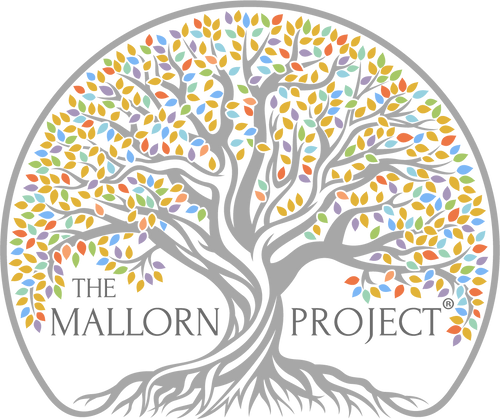What are the top 5 threats to biodiversity?
WHAT IS "BIODIVERSITY" & WHY DOES IT MATTER?
🐾 Short for “biological diversity”.
🐾 Means the variety of living things in an area, at all levels of biological organization. Includes genes, species, and ecosystems.
🐾 Matters for intrinsic reasons (inherent value) and utilitarian reasons (benefits to humans).
5 THREATS TO BIODIVERSITY
❶ Habitat loss
❷ Climate change
❸ Pollution
❹ Overconsumption
❺ Invasive species and disease
⚠️ Lead to species extinctions and decreased populations, changes in ecosystem function, and loss of ecosystem services.
🛟 Mostly caused by human activities, so to address them we need changed human behaviour and conservation!
HABITAT LOSS
☘️ Primary threat.
🌻 Major drivers are human activities on land and sea like deforestation, urbanization, and agriculture.
🌿 Habitat loss reduces the space species need to live and thrive, forces them to find new homes, and disrupts natural processes that maintain ecosystems, like seed dispersal, pollination, water purification, climate regulation, and pest control.
🌴 Habitat fragmentation isolates populations, making it harder for them to reproduce and maintain genetic diversity.
🍃 Solutions include protecting and restoring habitats, safeguarding threatened species, and adopting sustainable land and sea use practices.
CLIMATE CHANGE
🌡️ Causes shifts in temperature and rain patterns that disrupt ecosystems and exacerbates other 4 threats.
🥵 Impacts are direct, like increased heat stress on animals and changed timing of seasonal events, and indirect, like changed distribution of species and interactions between them.
🥶 Some regions and species are more vulnerable than others.
😳 Major drivers are emissions of greenhouse gases (“GHGs”), including carbon dioxide (“C02”).
🌏 Solutions include reducing GHGs and promoting adaptation strategies for species and ecosystems.
POLLUTION
💨 Kills and harms species, directly or indirectly.
💦 There are many kinds of pollution. Chemical pollution, like pesticides and fertilizers, accumulates in the food chain and get eaten. Air pollution reduces the amount of sunlight, changes air and soil chemistry, damages plants, and reduces their ability to photosynthesize. Water pollution makes the water toxic and reduces the amount of oxygen. Noise pollution disrupts mating and communication. Plastic pollution contaminates soil and water and is ingested by, entangles, and suffocates marine animals.
🐄 Major drivers are industries (“industrial pollution”) and agriculture (“agricultural pollution”).
🌾 Solutions include reducing pollution and adopting sustainable industrial and agricultural practices.
OVERCONSUMPTION
🐻 Means unsustainable use of species – at rates that exceed their ability to replenish themselves – to the point their populations are depleted or driven to extinction.
🐻❄️ Threatens survival of individual species and disrupts ecosystems by unbalancing inter-species relationships.
🦊 Major drivers are human population growth, increased human demand for food, medicine, and other products, and technologies that make extraction easier.
🐼 Solutions include sustainable use.
INVASIVE SPECIES & DISEASE
Invasive (“Alien”) Species
🐢 Means plants and animals that are not native to a particular area.
🐸 Harm native species (including endemic species found in one geographic area and nowhere else in the world), their habitats, and ecosystems. How? By outcompeting native species for resources like food, water, light, and space, introducing new predators and diseases, and changing the composition of plant communities and dynamics of food webs.
🦬 Major drivers are human activities like trade, travel, and development, as well as climate change, which makes it easier for invasive species to spread.
🐞 Solutions include preventing their introduction and managing/controlling their spread in ways like early detection with rapid response, habitat restoration, and sustainable biological control.
Disease
🦠 Caused by pathogens like bacteria, viruses, fungi, and parasites that spread through direct contact, vectors like insects, or the environment.
🐝 Leads to species population decline and extinction and disrupts ecosystems. For example, bee disease reduces the number of pollinators available to pollinate plants, leading to decreased population of plants that rely on pollinators for reproduction and ripple effects on other species that rely on them for food or habitat.
💉 Solutions include monitoring, tracking, and understanding outbreaks, and developing strategies for disease management and control (like vaccines, controlling movement of infected individuals, and promoting biosecurity).
WHAT CAN YOU DO?
🐯 You, a regular person, can help. How?
🗣️ Talk about it!
❤️🩹 The more people know about threatened biodiversity, the more attention it gets, and the more pressure builds on governments to make and implement ambitious plans to save nature.
WHAT IS "BIODIVERSITY" & WHY DOES IT MATTER?
🐾 Short for “biological diversity”.
🐾 Means the variety of living things in an area, at all levels of biological organization. Includes genes, species, and ecosystems.
🐾 Matters for intrinsic reasons (inherent value) and utilitarian reasons (benefits to humans).
5 THREATS TO BIODIVERSITY
❶ Habitat loss
❷ Climate change
❸ Pollution
❹ Overconsumption
❺ Invasive species and disease
⚠️ Lead to species extinctions and decreased populations, changes in ecosystem function, and loss of ecosystem services.
🛟 Mostly caused by human activities, so to address them we need changed human behaviour and conservation!
HABITAT LOSS
☘️ Primary threat.
🌻 Major drivers are human activities on land and sea like deforestation, urbanization, and agriculture.
🌿 Habitat loss reduces the space species need to live and thrive, forces them to find new homes, and disrupts natural processes that maintain ecosystems, like seed dispersal, pollination, water purification, climate regulation, and pest control.
🌴 Habitat fragmentation isolates populations, making it harder for them to reproduce and maintain genetic diversity.
🍃 Solutions include protecting and restoring habitats, safeguarding threatened species, and adopting sustainable land and sea use practices.
CLIMATE CHANGE
🌡️ Causes shifts in temperature and rain patterns that disrupt ecosystems and exacerbates other 4 threats.
🥵 Impacts are direct, like increased heat stress on animals and changed timing of seasonal events, and indirect, like changed distribution of species and interactions between them.
🥶 Some regions and species are more vulnerable than others.
😳 Major drivers are emissions of greenhouse gases (“GHGs”), including carbon dioxide (“C02”).
🌏 Solutions include reducing GHGs and promoting adaptation strategies for species and ecosystems.
POLLUTION
💨 Kills and harms species, directly or indirectly.
💦 There are many kinds of pollution. Chemical pollution, like pesticides and fertilizers, accumulates in the food chain and get eaten. Air pollution reduces the amount of sunlight, changes air and soil chemistry, damages plants, and reduces their ability to photosynthesize. Water pollution makes the water toxic and reduces the amount of oxygen. Noise pollution disrupts mating and communication. Plastic pollution contaminates soil and water and is ingested by, entangles, and suffocates marine animals.
🐄 Major drivers are industries (“industrial pollution”) and agriculture (“agricultural pollution”).
🌾 Solutions include reducing pollution and adopting sustainable industrial and agricultural practices.
OVERCONSUMPTION
🐻 Means unsustainable use of species – at rates that exceed their ability to replenish themselves – to the point their populations are depleted or driven to extinction.
🐻❄️ Threatens survival of individual species and disrupts ecosystems by unbalancing inter-species relationships.
🦊 Major drivers are human population growth, increased human demand for food, medicine, and other products, and technologies that make extraction easier.
🐼 Solutions include sustainable use.
INVASIVE SPECIES & DISEASE
Invasive (“Alien”) Species
🐢 Means plants and animals that are not native to a particular area.
🐸 Harm native species (including endemic species found in one geographic area and nowhere else in the world), their habitats, and ecosystems. How? By outcompeting native species for resources like food, water, light, and space, introducing new predators and diseases, and changing the composition of plant communities and dynamics of food webs.
🦬 Major drivers are human activities like trade, travel, and development, as well as climate change, which makes it easier for invasive species to spread.
🐞 Solutions include preventing their introduction and managing/controlling their spread in ways like early detection with rapid response, habitat restoration, and sustainable biological control.
Disease
🦠 Caused by pathogens like bacteria, viruses, fungi, and parasites that spread through direct contact, vectors like insects, or the environment.
🐝 Leads to species population decline and extinction and disrupts ecosystems. For example, bee disease reduces the number of pollinators available to pollinate plants, leading to decreased population of plants that rely on pollinators for reproduction and ripple effects on other species that rely on them for food or habitat.
💉 Solutions include monitoring, tracking, and understanding outbreaks, and developing strategies for disease management and control (like vaccines, controlling movement of infected individuals, and promoting biosecurity).
WHAT CAN YOU DO?
🐯 You, a regular person, can help. How?
🗣️ Talk about it!
❤️🩹 The more people know about threatened biodiversity, the more attention it gets, and the more pressure builds on governments to make and implement ambitious plans to save nature.


